
Pakistan’s Trucks Are Vibrant, Bedazzled Works of Art
The tradition of decorating any mode of transportation—from camels to ice cream carts—dates back centuries.
There are more than 277,000 trucks on Pakistan’s roads. With their heavy loads, they crawl through the narrow routes of the country’s eastern river valleys toward the rocky expanses of the southwest plateaus and—usually—to the snow-capped Karakoram mountains in the north; recent catastrophic flooding has swept away key bridges in the devastated region. Pakistan depends on these trucks for most of the country’s transportation needs. But they also fill another need: a platform to parade the country’s culture.
In Pakistan, most trucks are vivid showpieces of extravagant design. They are decorated with ornate striping, fishes, peacocks, flowers, politicians, movie stars, cricketers, and singers. They wobble along the highways with intricate wooden frames and metal work that glitters in the sun and bells and pom poms swinging from the undercarriage. For the region’s drivers and artists, they are more than conveyances. These trucks are statements.
“My trucks are my pride,” says 45-year-old Gulam Nabi from Karachi, who owns ten trucks and works with traders to transport goods. “Someone can say it’s a waste of money to decorate it, but when I buy a truck, it’s my truck. I want it to be more beautiful than any other truck on the road.” Many drivers and owners share that sense of competition, spending as much as $30,000—more than twice the average annual income—to paint their trucks to make them more beautiful than others.
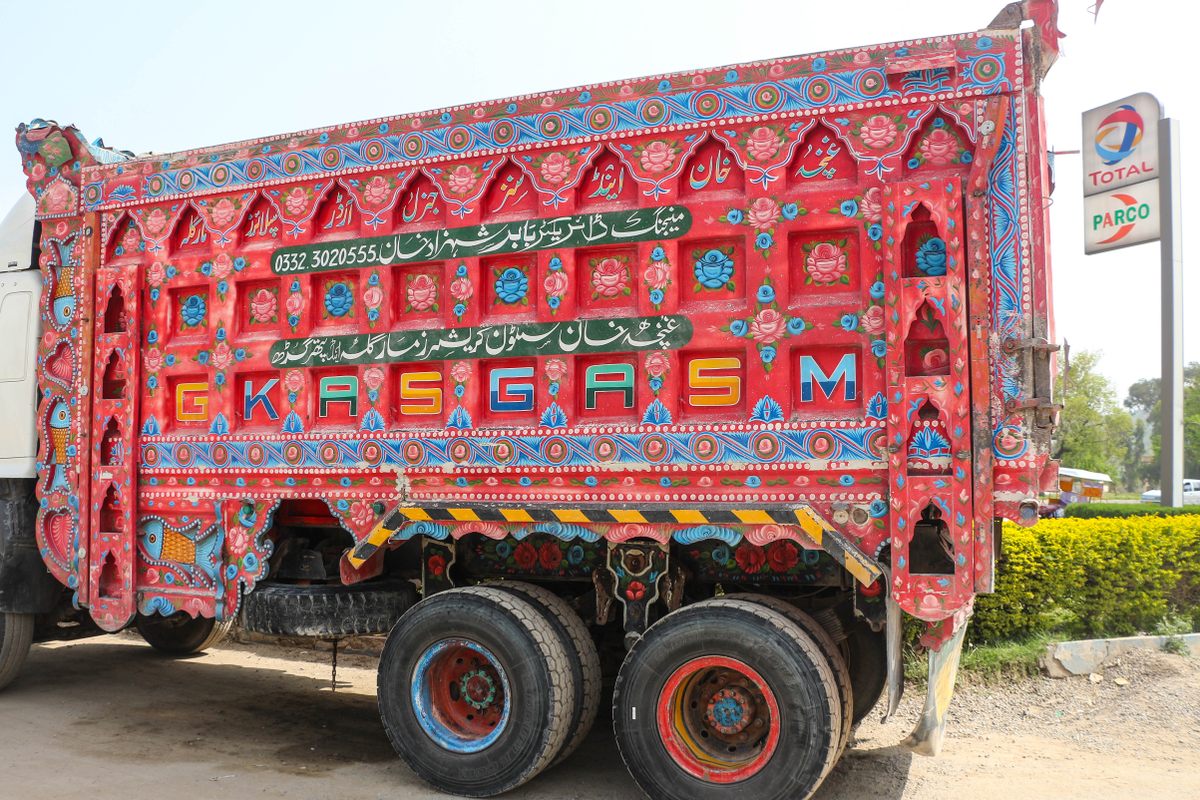
In Pakistan, this exuberant artwork is called “phool patti” and it adorns almost every form of transportation—ice cream carts, tractors, local buses, tuk tuks, and minivans that ferry passengers from town to town. In rural Pakistan, camels are decorated with henna designs and barbered with ancient motifs. Seafaring boats get bright paint makeovers. “Decorating vehicles is in our genes,” says Ali Salman Anchan, founder and creative director of the social enterprise Phool Patti which promotes Pakistani truck art across the world.
Anchan may be right. Truck art is linked with antiquity, says visual artist Farah Yusuf Ali. During the Indus Valley Civilization (2600 -1700 BC), which extended from present-day northeast Afghanistan to Pakistan and northwest India, people beautified their boats and transportation animals. This tradition of decorating any mode of transport lasted over centuries and prevailed through the Mughal Empire and British India. Pakistani truck art, Ali says, is the contemporary version of this tradition.
When trucks arrived in British India in the early 20th century, local companies embossed their decorative logos on trucks. According to Ali’s research, these logos helped illiterate working-class laborers to identify trucks. According to Durriya Kazi’s 1998 paper “Decorated Trucks of Pakistan,” General Motors first introduced trucks to Karachi in the 1930s, and by the time of the Indian partition in 1947, Karachi, Pakistan’s largest city, was a hub for truck painting. Artists, metal workers, and craftsmen from across the country flocked to Karachi for work. Ghandhara Industries, who took over General Motors’ national arm in 1963, imported a large number of massive Bedford trucks, produced by the British manufacturer Vauxhall. Known for their durability, these Bedford trucks came to dominate Pakistan’s roads, many with decorated “crowns”—large wooden prows fixed to the top of the truck.
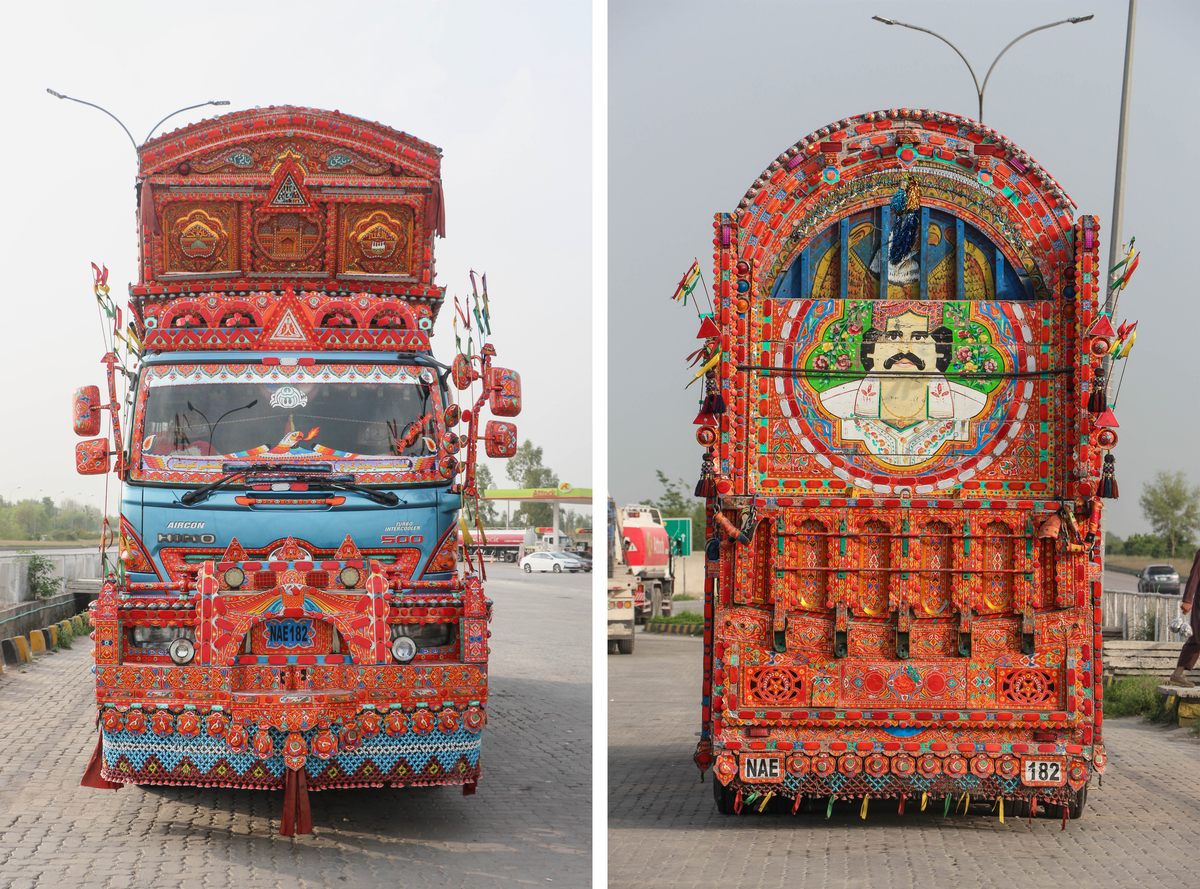
Some of the earliest truck artists were fresco painters in royal Mughal and Rajasthani palaces. When the British occupied the region, they found themselves jobless. Most of these artists were Muslim and migrated to the new Islamic nation of Pakistan. “When they had no work, they applied their art on horse carts and trucks,” Anchan says. They became the masters of truck paintings. These early truck decorations included pictures of Hindu gods and Sikh gurus to bring good fortune, Ali explains. They were swapped by Sufi saints in Muslim majority areas.
Truck art has no formal institution. “We learn from the truck station. The master passes down the knowledge to you,” Anchan says. Truck art captures the artist’s imagination and taps into his own style to decorate every single piece of the truck. Every vehicle has its own shape and artists decide which design would fit into the structure.
In Pakistan, truck artists from different regions have their own artistic style. One or a few masters dominate a region, like Haider Ali from Karachi, whose grandfather migrated from India as a traditional crafts painter. (He painted a truck at the Smithsonian Folk Festival in 2002.) “As a community, when we see a truck, we can say this art is from Punjab or this one is from Peshawar. The style of the drawing, the flowers, and the motifs are unique to regions and artists,” Anchan says.
Most new trucks land in the port city of Karachi, where they are originally decorated with watercolor imagery, fluorescent colors, mirrors, and woodwork. In Rawalpindi, a large commercial city that sits next to Pakistan’s capital Islamabad, chamak patti, or sticker art is more popular, so trucks based there get a second makeover. “We take about nine days to entirely redecorate a truck,” says 40-year-old artist Imran Riaz at the truck workshop in Rawalpindi.
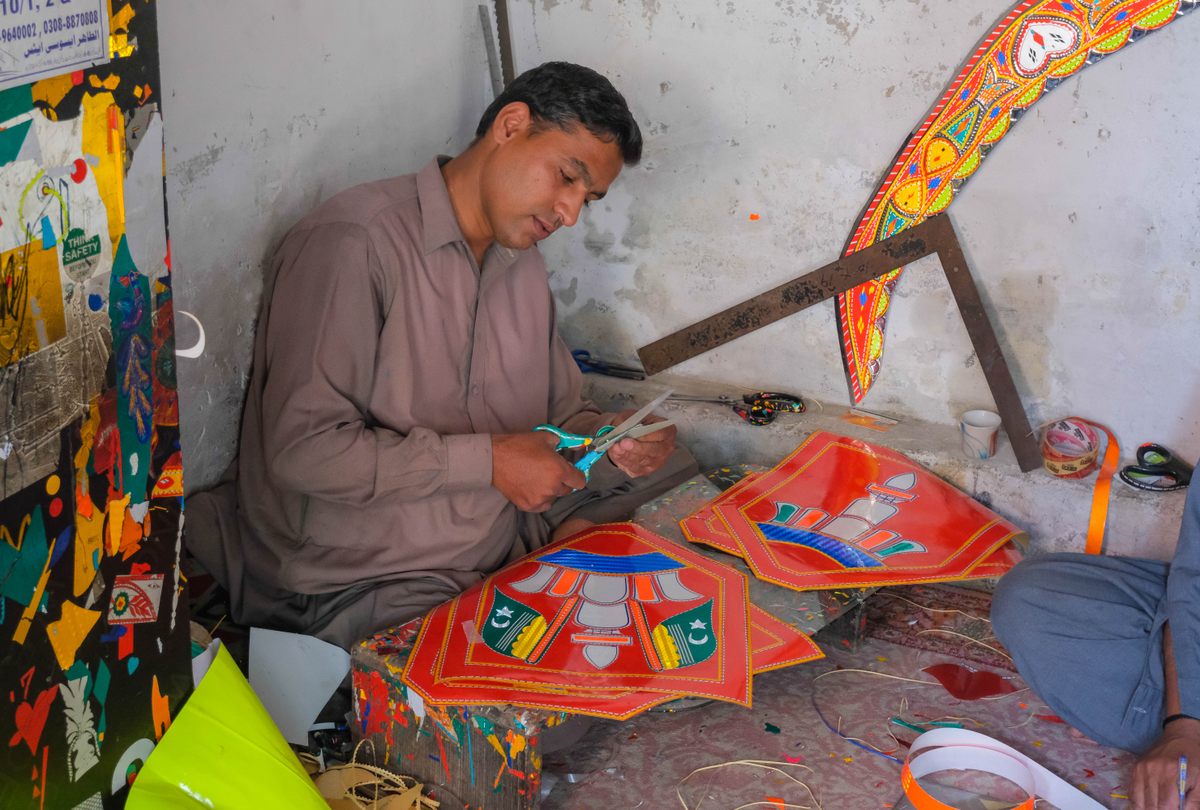
On this day, Riaz painstakingly carves out a floral design for a truck’s side mirror. Riaz often has artistic freedom, but sometimes, drivers and owners show up with their demands. “This driver is Kashmiri, so he asked me to decorate his truck with Pakistani flags. He wanted to show his patriotism to Pakistan,” Riaz says, showing a couple of Pakistani flags carved on glossy sticker paper.
While their trucks are a point of pride and a home on wheels for truck drivers, they also see them as a decked-out bride, Ali says. “Every inch is covered with vibrant motifs, and hanging metal embellishments emulate jewelry,” she says. Sometimes, truckers want artists to draw a portrait of a politician, cricket star, or folk singer they admire. Ali says these types of portraits are unique and distinguish Pakistani truck art from vehicular art across the world.
“Truck art was also our social media,” Anchan says, chuckling. “When Imran Khan—Pakistan’s previous prime minister—won the cricket world cup in 1992, we painted cricket stars on our trucks. When a film became a hit, we painted the actor. It captures our current trends. It reflects the mood of a nation,” he says. Now truck art is inspiring pop culture, too; major clothing brands incorporate it into their textiles and sneakers and visitors can take home a piece of truck art from the souvenir shops at Islamabad airport.
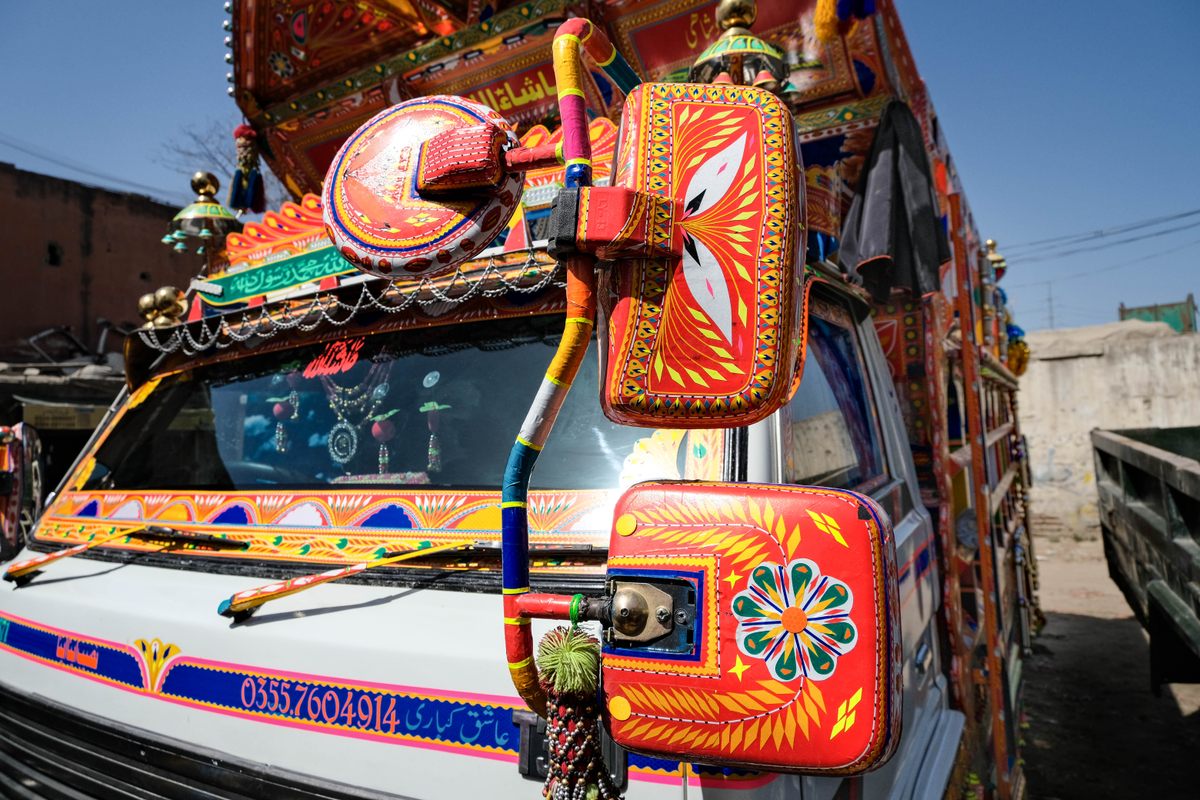
Artists and activists also use trucks to educate and address social issues. “It’s important to use culturally sensitive tools that resonate with local audiences. Truck art is an expression of local artists. It’s also a moving billboard that carries messages from one part of Pakistan to another,” says anthropologist and documentary filmmaker Samar MinAllah Khan who worked with a team of truck artists to share messages about child marriages, sexual abuse, domestic labor, and honor killings. Khan also collaborated with Roshni, a Karachi-based organization to locate missing children, by painting their children’s portraits on the back of the trucks with helpline numbers.
Moreover, Khan says truck art helps tackle the stereotypical representation of Pashtun truck drivers. Often considered a warrior race, most Pashtuns live close to the Afghan-Pakistan border region. “Truck art breaks the stigma of seeing Pashtuns as men holding rifles,” Khan says, “Through truck art, you celebrate the imaginative nature of Pashtuns. You celebrate their love for poetry and art.”
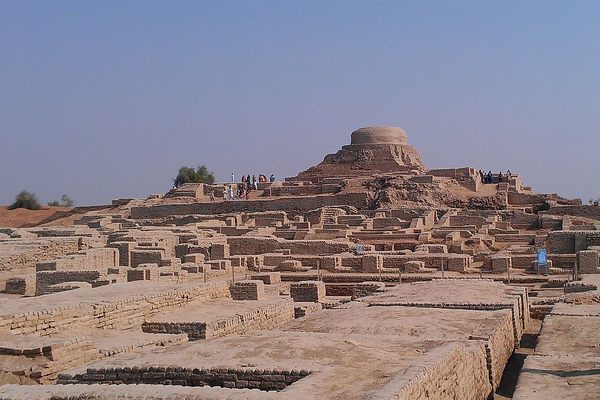




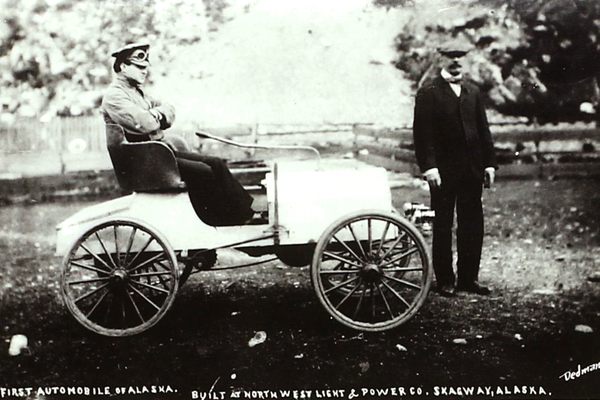































Follow us on Twitter to get the latest on the world's hidden wonders.
Like us on Facebook to get the latest on the world's hidden wonders.
Follow us on Twitter Like us on Facebook